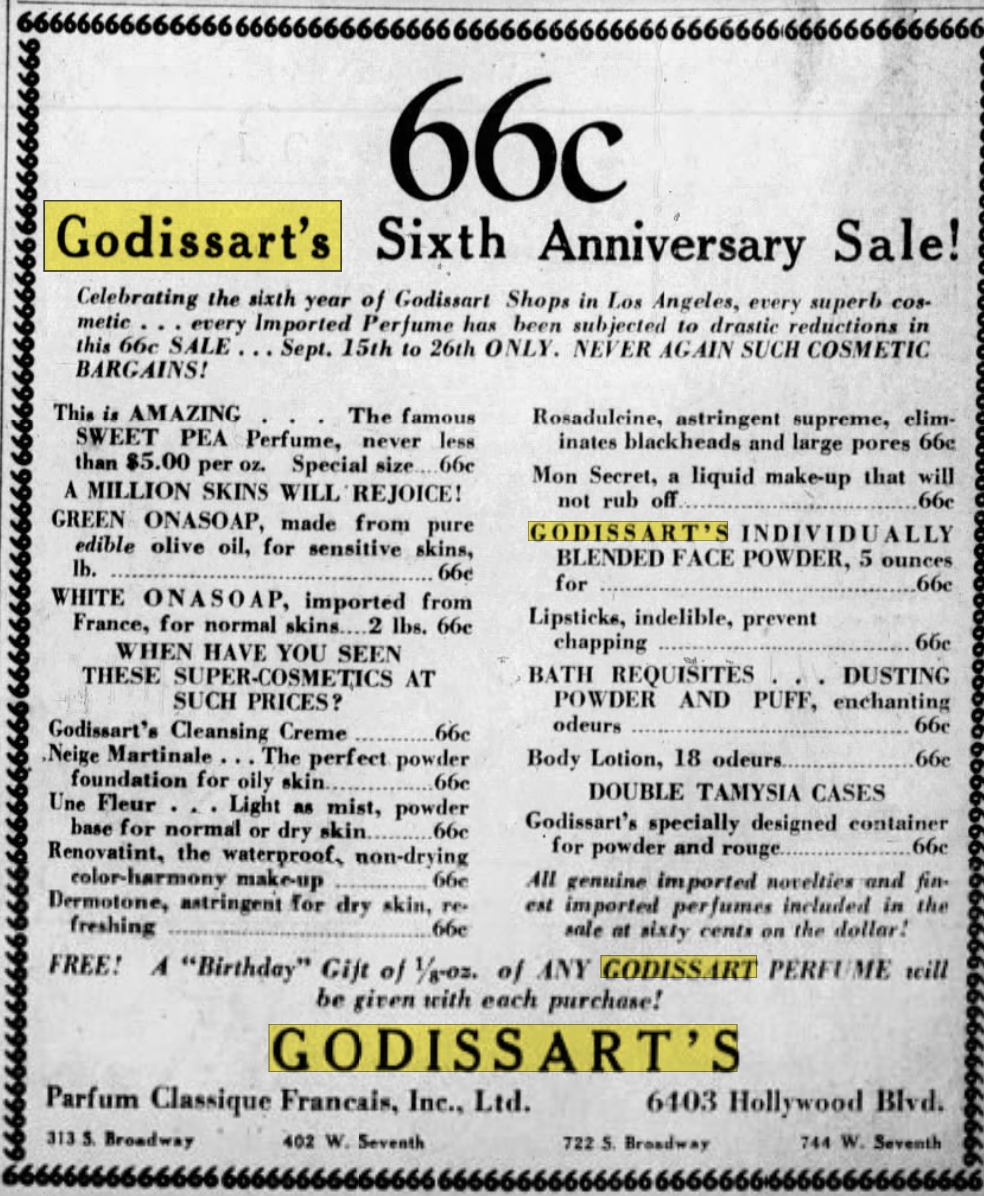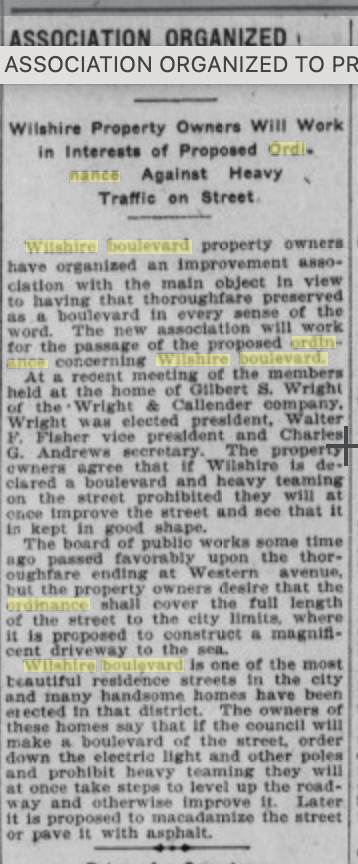One of the most annoying aspects of researching French LA is that some historical documents, especially those written in Northern California, either completely ignore the French Colony in LA or - at most - treat it as an afterthought.
A reader pointed me toward the California Historical Society Quarterly's four-part series on the French-language press in California, written by one Clifford H. Bissell. I wasn't optimistic, but I always check these things out just in case. The CHS is known to have an impressive collection of newspapers.
Part one: blah blah blah NorCal.
Part two: blah blah blah more NorCal.
Part three: blah blah blah it's like the southern half of the state doesn't exist.
Part four: blah blah blah NorCal NorCal NorCal...then, long after I'd abandoned hope, a section on the French press in Southern California began on the thirteenth page.
FINALLY.
I've mentioned the Spanish-language newspaper El Clamor Público before. For a brief period of time, the newspaper printed a page in French - not surprising, since editor Francisco P. Ramirez learned French from his godfather Jean-Louis Vignes. After the French page ended its run a few months later, the occasional French-language article, letter, or ad continued to run. This is also not surprising, since many French Angelenos picked up Spanish before (or instead of) English.
Two years after Corsican-born F. Tamiet founded L'Union in 1876, Tamiet disappeared. L'Union's editor F.V.C. de Mondran, who had left to establish Le Courrier de Los Angeles, used its debut issue to explain that Tamiet had forged checks, embezzled money, and left debts behind. The French Benevolent Society's meeting minutes from much of 1877 are missing, possibly because Tamiet was the Society's secretary at the time and may have been destroying unflattering records.
Mayor Joseph Mascarel was the second owner of L'Union. Bissell does insult Mascarel's intelligence, claiming he was nearly illiterate (I have never seen anything to indicate this claim is true).
As for F.V.C. de Mondran, aka Frédéric François, Vicomte Cazeaux de Mondran, his newspaper career seems to have been short-lived, as Le Courrier only lasted a few issues, and he left town soon after that (although unlike Tamiet, he didn't leave any sort of mess behind him and doesn't seem to have had a known reason for leaving).
Pierre Ganée founded weekly paper L'Union Nouvelle in 1879, not long after L'Union folded, and remained editor and publisher until he passed away in 1902. The paper was widely read by most French-speaking families in Southern California, and was still being published when the Herald-Express ran its last issue in 1962.
Le Progrès followed in 1883, helmed by Dr. Pigné-Dupuytren and then Georges Le Mesnager, neither of whom really had the time to both keep it going and attend to their other jobs. For a time, J.P. Goytino, notorious son-in-law of Joseph Mascarel, edited the paper, but he left to focus on the Basque-language Eskual-Herria. (Goytino had a well-earned bad reputation that goes far beyond the scope of this entry. He was particularly notorious for being a scam artist and a slumlord.)
Belgian-born Charles Raskin (whom we've briefly met before) founded Le Gaulois in 1887, but ceased publication in 1891 due to being called to Brussels for his other job (agent for the Red Star Line and Compagnie Générale Transatlantique). Subscribers were turned over to L'Union Nouvelle after the final issue of Le Gaulois. Raskin also used the final issue to call out J.P. Goytino.
Roughly translated:
An unfortunate and miserable vagabond, let's name him, J.P. Goytino, a former resident of the Los Angeles County Prison, has particularly taken on the task of vilifying us. We know full well that he belonged in France, for three years, to the Congregation of the Ignorant Brothers, under the name of Frire Lupulus, and that he was guilty of a series of unnatural crimes. Forced to leave France as a result of these misdeeds - and also as a result of acts of fraud and forgery committed to the detriment of his uncle, Mr. Bernard Etcheverry, he failed in California. Everyone knows that he owes only to the accidental death of his cousin Léonis, not to occupy a cell today in the state prison in San Quentin. It was as a result of his fortuitous release that he became editor of Le Progrés! Our readers know what has been achieved.
Félix Violé came on board at Le Progrés - the very same newspaper that had inspired Félix and his brother Jules to come to Los Angeles - in 1890.
The 1891 city directory lists a Le Progrés Californien, with no editor or publisher listed, and there seem to be no other references to it anywhere. Perhaps it was short-lived, like Le Courrier, but with no surviving copies. That left Le Progrés as L'Union Nouvelle's only serious competition.
Ganée was certainly an opinionated editor. L'Union Nouvelle leaned Democrat until 1896, when Ganée's disapproval of President Cleveland's trade policy prompted him to switch the paper's allegiance to the Republican Party. Bissell adds "It was very anti-British, and seemed obsessed with the likelihood of the world's being dominated by the Anglo-Saxon races, i.e. Great Britain and the United States. It was rabid on the subject of Dreyfus."
(The less said about Ganée's opinion of Alfred Dreyfus, who was wrongly accused, wrongly convicted twice, and the subject of a cover-up when the real traitor was uncovered, the better. Ganée was eventually forced to admit Dreyfus' innocence.)
Ganée was equally mistaken about the Spanish-American war, believing Spain's navy to be superior to that of the United States. Oops!
Jean Trébaol edited Le Progrés either with or under the direction of Goytino, but left after a squabble and founded Le Français. He proudly advertised it in English as "the only French newspaper in Southern California established, owned, and published by a Frenchman." This must have come as news to Pierre Ganée, the Frenchman who established, owned, and published the long-running L'Union Nouvelle. In the end, Le Français merged with L'Union Nouvelle in 1900, and Trébaol went back to his old job: teaching. Like Tamiet, he mysteriously disappeared in 1919, but I'll dig into that another time.
















